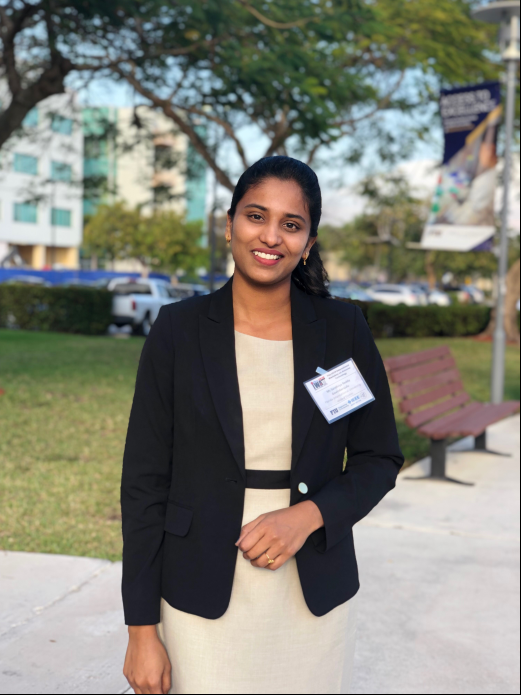 Sandhiya Reddy Govindarajulu received the Best Student Paper Award at the 2019 International Workshop of Antenna Technology (iWAT) conference for her paper, Range Optimization for DSRC and 5G Millimeter-Wave Vehicle-to-Vehicle Communication Link. iWAT was held at FIU from March 3rd to March 6, 2019.
Sandhiya Reddy Govindarajulu received the Best Student Paper Award at the 2019 International Workshop of Antenna Technology (iWAT) conference for her paper, Range Optimization for DSRC and 5G Millimeter-Wave Vehicle-to-Vehicle Communication Link. iWAT was held at FIU from March 3rd to March 6, 2019.
Govindarajulu, born in Ambur, India, is a second-year Ph.D. student in the Department of Electrical and Computer Engineering under the supervision of Professor Elias Alwan. She received her B.E. degree in electronics and communication engineering from Anna University, Chennai, India in 2013 and M.E. degree in communication systems from Anna University, Chennai, India in 2015. While pursuing her master’s degree, she was an intern in the Society for Applied Microwave Electronics Engineering and Research (SAMEER), India. After her graduation, she was employed as a program analyst at Cognizant Technology Solutions, Chennai, India. Her research interests include millimeter-wave antennas for 5G communication systems, beamforming, and ultra-wideband antennas.
About the research: We witness a new wave of industrial revolution, where vehicles evolve from being docile and fully controlled by human beings to autonomous self-driving vehicles. Such development entails vehicles to be equipped with an enormous number of sensors, cameras, and radar devices, to construct local view of the nearby objects. Autonomous vehicles cannot entirely depend on their own collected measurements alone. The Federal Communications Commission (FCC) has already allocated 5.85 GHz – 5.95 GHz for vehicle to vehicle (V2V) communication, where vehicles exchange their collected information between connected vehicles, to further improve the safety of the drivers. Since the allocated spectrum provides fewer opportunities for high data rate, FCC plans to allocate part of the millimeter-wave spectrum for 5G V2V communication. Sandhiya’s work involves the implementation of a novel dual-band V2V transceiver architecture for both DSRC and 28GHz communications. This project is funded by the National Science Foundation (NSF).
